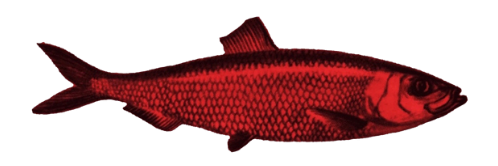Playing with Sound
For two days we worked with Thor McIntyre Burnie – sound artist extraordinaire – to explore some technology and to make some decisions around our touring kit.
I should explain: the premise for our show is that a small group of Whistlers have arrived in a wood. These are an ancient tribe of people who, for centuries, have lived deep in the forests of Eastern Europe, who live in close symbiosis with birds and communicate by whistling. They are the only known culture of people in Eurasia who have been isolated from the modern world. As such, a charity – the Whistler Conservation Society (WCS) – has taken responsibility for protecting and communicating their needs. Our project sees the WCS educating local people in the unique nature of this culture and recruiting local volunteers to advocate for their protection; and the delivery of Whistler spotting outings into the woods where you may chance upon a Whistler of two in their habitat.
So, our exploration focused on how we might introduce people into the Whistler world, taking care to maintain and augment the fiction. We wanted to explore the relationship between live music and sound and pre-recorded, amplified sound. Ali is a mean woodwind player and we want to make the most of her skills. And we want to create the effect of a live songbird presence, who could (a little ironically) be disturbed by our presence in the woods.
We’ve used our headsets many times before in the context of a guided tour. The audience will gather by a Whistler Conservation Society tent, which will have information boards and links to short films. However, in case people don’t fancy reading the information or arrive late, we can use our headsets to relay some background information as people walk from the tent to the spotting site. However, we need to make sure that we don’t overwhelm the listener with information, while they are walking through a natural space that could be full of atmospheric sounds, as well as captivating imagery. If we’re not careful, the information won’t land well and we won’t make the most of the gifts of our site. If we get it right, we can help to locate the fiction onto a real place and start the enchantment on the right foot.
Ali had explored a number of different instruments. We expected that a wooden flute or whistle would provide the most authentic or raw sound, appropriate to unsophisticated instrument makers. From our experiments we’ve decided that the ‘Original’ Clarke Tin Whistle is a good choice for our needs. They’re cheap, so we can avoid dramas if they get damaged. And the sound is simple and clear. The internet tells me that the design hasn’t changed in 170 years And we worked out that you can cover them in gesso and paint them to look like they’re made from wood. Job’s a good’un!
Again, thanks to Arts Council England, we bought some Minirigs. Other brands of rechargable, bluetooth speakers are available but these are made in Bristol. And they’re good. You can tether them together in a chain. And you can bundle them together with 2 regular mini rigs and a subwoofer to make a fully rounded sound. While their operation takes a little time to grasp (you can see a video of Thor running through this online), they’re very good.
Tethering Minirigs via bluetooth in a woodland is a little risky. If they are unused for a while they will disconnect and when this happens you have work methodically through the group, in strict sequence, to tether them back together. However, it turns out that we can connect our silent disco headsets to the Minirigs with cables, which keeps them ‘on’ and enables you to control them via the same device. In this way, we could easily and reliably amplify a rich tapestry of bird song across a large area. Carefully placed speakers could also give the impression of Whistlers hidden in the trees or the undergrowth. What would it feel like to the audience if there was the impression that Whistlers were up ahead? What if they were being slowly surrounded?
Thor brought along a shotgun mic, a highly directional microphone which picks up sound at a distance where it’s pointed. This is the type of microphone that you see on film sets, at the end of a boom stick, with a big furry cover like a cat. We already own 80 radio-controlled (silent disco) headsets and Thor suggested that we could link the microphone to the headsets, so that the audience would be able to pick up the sound of Whistlers at a distance (whistling and playing whistles). We had a go and discovered straight away that this was a hit. It meant that the Whistlers could be heard before they were seen. And when they were seen, this could be at enough of a difference for it to feel possible that the Whistlers had not detected the audience. As such they could be read as undisturbed. In simple terms, it would help to elevate the characters from a bunch of idiots in strange costumes. Also it was great fun for the WCS official to play on the tropes of Richard Attenborough, Chris Packham and other naturalists that we know and love.
What if we heard the sounds of a threat for far off? For example, a group of people on a grouse shoot, who could accidentally shoot a Whistler and create a drama – both a tragedy and a great embarrassment to the Whistler Conservation Society! Ideas like this are mischievous and therefore compelling but we have to work out how much storytelling we want to layer onto the Whistlers and how much we want to sit in a simple place. To be continued…
